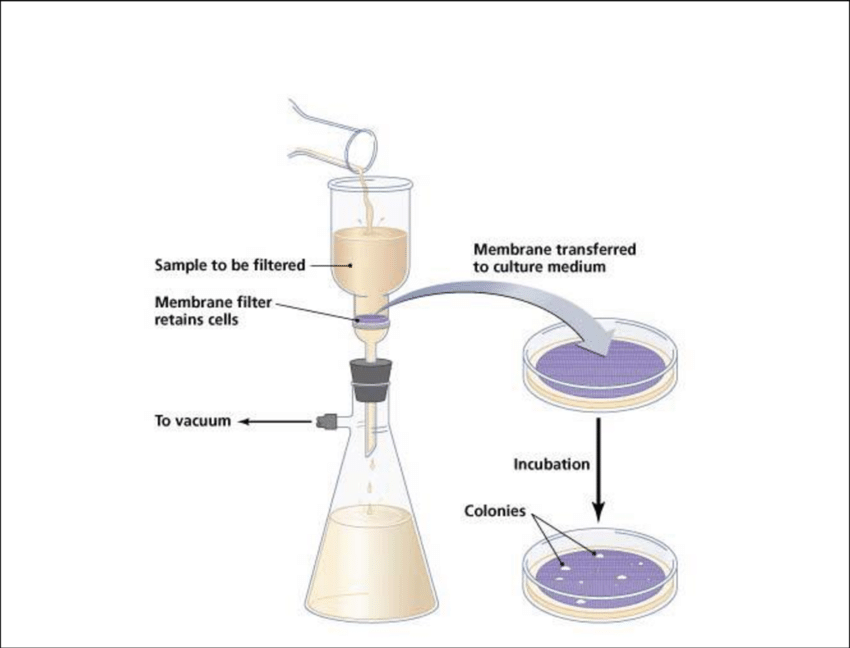Table of Contents
Principle of Membrane filter:
Membrane filter: (Microfiltration) Fitter the material that can retain large solid particles and other particles liquid passes through a microporous membrane material to separate specific substances under the action of static pressure difference.
Construction Membrane filter:
Membrane filters are made of thin and flat membranes of cellulose derivates, (eg: cellulose acetate, and cellulose nitrate). These filters are brittle when it is stored in dry conditions. The filters are 50-150m thickness, and available in sizes up to 60cm². It has 400-500 million pores per square centimeter of filter surface.
Working:
The membrane filter pores are uniform in size and occupy about 80% of the filter volume to avoid clogging the membrane, pre-filtration is often required. The selection of membrane filter depends upon the particles to be removed.
Eg: 0.2m for filtering of all bacteria. 1.2μ for filtering non-living particles.
Uses:
These filters are used for the sterilization of both aqueous and oily liquids.
Also read: Principle Construction, and working of cyclone separator
